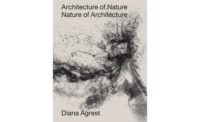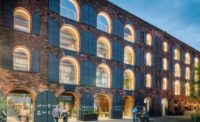Richard Thomson defines the scope of this valuable book by writing that Claude Monet painted “cities and villages, houses and monuments, churches and cathedrals, bridges and railway stations” in Paris, London, Amsterdam, Rouen, and Venice. Monet excluded substantial human figures but used architecture to suggest, as Thompson writes, “human presence, sheltered and enduring.” Monet usually observed buildings from a high vantage point and wrote, “I want to paint the air that surrounds the bridge, the house, the boat—the beauty of the light [and colors] in which they exist . . . If you walk along the banks of the Seine, at Asnières for example, you can catch in a glance the red roof and the striking white of a chalet wall, the tender green of a poplar, the yellow of the track, the blue of the river.” The theme of this handsome catalogue of the exhibition (recently at the National Gallery, London) sharpens the traditional focus on Monet’s landscapes and reveals how he captured the dancing moments of architectural reality. As Proust wrote of the madeleine in Swann’s Way, Monet’s paintings, “taking their proper shapes and growing solid, spring into being.”
American architects should be interested in seeing important European buildings through the eye of a great painter. Monet’s bridges, connecting people and linking the traditional to the modern world, create a structural and psychological harmony. The purplish Bridge at Amsterdam (1874) depicts a wide, rippling canal flowing beneath a long curved bridge that supports pedestrians carrying umbrellas under a low, heavy sky. The two thick poles of the drawbridge boldly cut the distant church in two, separating the tower from the lacy apertures of the upper spire. The humbler Houses on the Old Bridge at Vernon (1883) portrays several dark peasant dwellings with sagging roofs, crowded onto a wooden bridge that can scarcely hold them up and seems about to collapse beneath their oppressive weight. The higher, longer, and more solid structure in Wooden Bridge, Argenteuil (1872) supports a coach and horses and a file of walkers. The placid river, framed by the pillars of the bridge, opens onto docked sailboats and a distant church dwarfed by the spume of smoke from a factory chimney, all reflected in the gray Seine. The jollier Railway Bridge at Argenteuil, completed the following year, provides a striking contrast. Resting on eight thick concrete pillars driven into the riverbed, the bridge, made of steel, juts straight across from shore to shore and carries a train exhaling clouds of smoke. Pleasure boats sail harmoniously beneath the modern structure as two men on the bank of the river gaze at them.
Monet was inspired by architectural subjects that were anchored to his varied landscapes. But his late paintings of Venice blur, dissolve, and seem to sink into the stagnant water. This voluptuous melancholy and diaphanous melting prophesied his near blindness in the 1920s— a loss of vision that also plagued his friends and colleagues Camille Pissarro, Edgar Degas, and Mary Cassatt.








Post a comment to this article
Report Abusive Comment